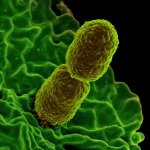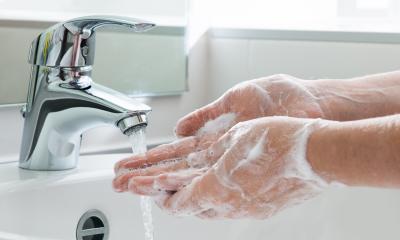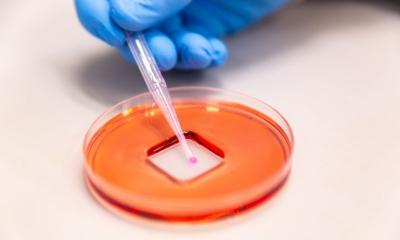News • Protection from bacteria, fungi, viruses
Antimicrobial technologies – how do they work?
Antimicrobial technologies such as coatings and textiles containing silver and copper are helping people during the Covid-19 pandemic by ensuring that whatever they touch, whether that is a door handle or their own mask, is free from live SARS-CoV-2 particles.

Image source: National Institutes of Health/Ethan Tyler and Nihal Altan-Bonnet (CC BY-NC 2.0)
But how exactly do these antimicrobial technologies work? How can a silver, copper or even polymeric coating kill microorganisms such as bacteria, fungi, or in the case of Covid-19, viruses? This article explores the mechanisms of action, or the interactions, through which antimicrobials work.
Microorganisms such as bacteria, viruses, and mold are single cellular organisms surrounded by either a cell wall, cell membrane, or both. Disruption of this outside layer is a common way to kill microorganisms. Like all organisms, the insides of a microorganism are carefully regulated, and ideally, stays inside.
One way to destroy microorganisms is to disrupt the activity of the membrane. For example, silver-based technologies release silver ions that can bind to proteins within the membrane that regulate transport into and out of the cell. Similarly, high concentrations of zinc, itself essential to microorganisms for growth, can end up blocking ion channels that cross the membrane. When nutrients essential to the microorganism cannot enter, cell growth and reproduction is halted. A more drastic method is to simply break the microorganism open. A wide range of antimicrobial technologies generate reactive oxygen species such as peroxides and singlet oxygen that attack and break down the cell membrane. Others, such as silane quaternary compounds, simply pierce or rupture the membrane through mechanical means.
Recommended article

Article • Covid-19 disinfection
New insights into SARS-CoV-2 surface stability and temperature susceptibility
Surface disinfection has proved an effective method to control Covid-19 infection, as virologists from the Ruhr University Bochum (RUB) have shown. However, an effective disinfection strategy against Coronavirus must consider various factors, says Professor Eike Steinmann, head of the Department of Molecular and Medical Virology at the RUB.
Antimicrobial technologies can also wreak havoc from inside the cell. Metal-based technologies, such as silver, copper, and zinc, release ions that bind to components of the cell’s internal machinery, many of which are a part of pathways essential to the cell’s survival. Metallic ions, being positively charged, also interact with negatively charged genetic material such as DNA and RNA. Access to DNA and RNA is critical – without it, new proteins cannot be created, and in the case of DNA, cell division is halted when DNA cannot be copied.
A tactic to combat bacteria and mold is to simply prevent adherence to surfaces. Bacteria and mold have the ability to form biofilm, a dense film-like structure containing and protecting millions of microorganisms. The first step to forming biofilm, is adherence to a surface. Antimicrobial companies have created surfaces that provide an unfavorable environment for adhesion, resulting in a microorganism that simply lives out the rest of its short life in peace without growing and forming problematic films.
Does the mechanism of action matter? In short, yes! There is a great concern amongst scientists that antimicrobials that kill microorganisms from within can contribute to the development of antibiotic resistant bacteria. Almost all organisms have a mechanism called an efflux pump that is responsible for removing toxic substances. Extensive exposure to low levels of toxins pressures microorganisms to develop and evolve more effective efflux pumps, which the microorganism can also use to pump out antibiotics.
Recommended article

News • XDR Klebsiella pneumoniae
Antibiotic resistance in Europe: Hospitals are part of the problem
New research has found that antibiotic-resistant strains of Klebsiella pneumoniae, an opportunistic pathogen that can cause respiratory and bloodstream infections, are spreading through hospitals in Europe. Certain strains are resistant to the carbapenem antibiotics that represent the last line of defence in treating infections and are therefore regarded as extremely drug resistant (XDR).
As far, scientists have only managed to induce resistance to antimicrobial technologies in the laboratory, but it will become a possibility in the wild if antimicrobial technologies are used irresponsibly. Antibiotic resistance is deemed by the World Health Organization as one of the top 10 global public health threats facing humanity – without effective antibiotics, many routine conditions and medical procedures today will become a matter of life and death.
Source: IDTechEx
09.04.2021











